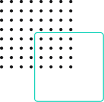With most Australians impacted in some way by the coronavirus (COVID-19) pandemic, the Australian government is responding rapidly to support both employees and employers.
The JobKeeper payment
The government has announced an unprecedented JobKeeper package for businesses impacted by COVID-19, which was approved by Federal Parliament on 8 April 2020. The initiative will enable affected employers to continue paying employees up to $1500 a fortnight from 30 March for a maximum period of six months.
The government hopes this will keep more Australians engaged with employers while also helping businesses bounce back quickly when we transition out of this crisis.
Which businesses are eligible for the JobKeeper package?
Eligible employers must:
– turn over less than $1 billion and have their turnover reduced by over 30 percent compared to last year (of at least a month), or
– turn over more than $1 billion but turnover has been reduced by more than 50 percent compared to last year (of at least a month), and
– not be subject to the Major Bank Levy
– have been employing eligible staff at 1 March 2020, and be able to confirm that each employee is still engaged by the business in order to receive JobKeeper payments.
According to the government, to establish that a business has faced either a 30 (or 50) per cent fall in their turnover, most businesses would be expected to establish that their turnover has fallen in the relevant month or three months (depending on the natural activity statement reporting period of that business) relative to their turnover a year earlier.
Where a business was not in operation a year earlier, or where their turnover a year earlier was not representative of their usual or average turnover, (e.g. because there was a large interim acquisition, they were newly established or their turnover is typically highly variable) the Tax Commissioner will have discretion to consider additional information that the business can provide to establish that they have been significantly affected by the impacts of the Coronavirus.
The Tax Commissioner will also have discretion to set out alternative tests that would establish eligibility in specific circumstances (e.g. eligibility may be established as soon as a business has ceased or significantly curtailed its operations). There will be some tolerance where employers, in good faith, estimate a greater than 30 (or 50) per cent fall in turnover but actually experience a slightly smaller fall.
Self-employed
If you’re a sole trader, a business owner without employees or you operate under a different business structure, you may still be eligible for the same scheme.
The intent of the JobKeeper Payment is to enable any eligible self-employed person to receive a wage subsidy regardless of what business structure they use, including:
– the partners in a partnership only receive a share of profits – one partner can be nominated to receive the payment
– directors of a company only receive dividends – one director can be nominated to receive it
– beneficiaries of a trust only receive distributions – one individual beneficiary (i.e. not a corporate beneficiary) can be nominated to receive it.
Eligible self-employed people will need to provide an ABN for the business, nominate a person to receive the payment with their Tax File Number, and provide a declaration of recent business activity.
These business owners must also provide a monthly update to the ATO to confirm their ongoing eligibility.
Which employees are eligible for the JobKeeper package?
Eligible employees must be:
– employed by the eligible employer (including those stood down or re-hired), and were employed at 1 March 2020
– full-time, part-time or long-term casuals (a casual must have been a regular staff member for more than 12 months at 1 March 2020)
– at least 16 years old
– an Australian citizen, a permanent visa holder, a Protected Special Category Visa Holder, a non-protected Special Category Visa Holder who has lived in Australia for over ten years, or a Special Category (Subclass 444) Visa Holder
The JobKeeper payment must be reported as income and may impact eligibility for other payments from Services Australia.
Receiving the JobKeeper payment
Here’s how the payment process will work:
– Eligible employers will be paid $1500 per fortnight for each employee. Eligible employees receive a minimum of $1500 a fortnight before tax, and employers can top up the payment.
Here’s how it works for eligible employees:
– If an employee usually receives $1500 a fortnight before tax, they’ll continue to receive their regular income according to their current workplace arrangement. The JobKeeper payment will help the employer to continue running their business by subsidising part or all of the employee income
– If the employee is normally paid less than $1500 per fortnight before tax, their employer must pay them a minimum of $1500 per fortnight before tax
– The same applies to to employees who have been stood down and those who were employed on 1 March 2020, ceased employment and then were re-engaged by the same eligible employer.
How to enrol for the JobKeeper payment
From 20 April, you or a registered tax professional can enrol for the JobKeeper payment. Important: You must enrol on or before 31 May.
Follow the steps here.
If you’re a sole trader click here.
What about superannuation?
It is up to the employer to decide they will pay super on any additional wage because of the JobKeeper Payment.
Payments are made to the employer monthly in arrears by the ATO.
When will the JobKeeper package begin?
The JobKeeper subsidy begins from 30 March 2020, and businesses will start receiving their first payments from 1 May 2020.
“I don’t have any income to pay my employees now and can’t wait until 1 May 2020.”
The reality is that many business owners won’t be able to hang on until 1 May. In this case, we recommend you contact your bank and talk about the possibility of accessing the government backed loan of up to $250,000, and repay it when the backdated funds come through.
“I’m not eligible for the JobKeeper payment.”
If you’re not eligible for the JobKeeper payment, the government has now increased the partner threshold for the JobSeeker payment to $79,962. If, for example, you’ve lost your job and are not eligible for the JobKeeper payment and your spouse earns less than the threshold, this may be an option for you.
How to apply for the JobSeeker payment
Employers and businesses without employees can register their interest in applying for the JobSeeker payment from 30 March 2020.
JobKeeper and the COVID-19 impact on commercial leases
We write in detail about the government’s new code of conduct for commercial tenants and landlords here.
Example of the JobKeeper payment (via business.gov.au)
Self-employed:
Melissa is a sole trader running a florist. She does not have employees. Melissa’s business has been in operation for several years. The economic downturn due to the Coronavirus has adversely affected Melissa’s business, and she expects that her business turnover will fall by more than 30 per cent compared to a typical month in 2019.
Melissa will be able to apply for the JobKeeper Payment and would receive $1,500 per fortnight before tax, paid on a monthly basis.
Worker with multiple jobs:
Michelle currently works two permanent part-time jobs, at an art gallery during weekdays, and at the local café on the weekend. Due to the impact of the Coronavirus, the gallery has closed and Michelle has been stood down without pay under the Fair Work Act. Michelle continues to work at the café delivering take-away orders.
Michelle can only receive the JobKeeper Payment once, from the employer from whom she nominates as her primary employer. As Michelle only claims the tax free threshold from her job at the art gallery, this will be treated as her nomination of the art gallery as her primary employer.
The art gallery is eligible for the JobKeeper Payment. The art gallery will pass the JobKeeper Payment on to Michelle, so she will receive $1,500 per fortnight before tax. During the application process, the art gallery will notify the ATO that Michelle receives the payment from them. The art gallery is also required to advise Michelle that she has been nominated to the ATO as an eligible employee to receive the payment.
The café is not eligible to receive the JobKeeper Payment for Michelle. The income that Michelle receives from her job at the café does not change her entitlement to the JobKeeper Payment she receives from the art gallery.
Employee made redundant after 1 March:
Miles worked as a permanent part-time personal trainer at a gym for six months and was made redundant on 20 March 2020 in response to the Government directive that gyms close. Miles was not entitled to redundancy pay due to his length of service.
In response to the announcement of the JobKeeper Payment, the gym decides they want to re-engage Miles so they are well placed to resume their operations once the Coronavirus restrictions are lifted.
After being made redundant, Miles had registered an intent to claim with Services Australia for access to the JobSeeker Payment and the Coronavirus Supplement. Miles is single, with no children and in total he would be eligible to receive $1,124.50 before tax per fortnight.
If Miles chooses to be re-hired by the gym, under the JobKeeper Payment he will receive $1,500 a fortnight before tax while he is stood down. Miles will need to advise Services Australia of his income. He is no longer eligible for the JobSeeker Payment and the Coronavirus Supplement from Services Australia as a result of receiving the JobKeeper Payment.
Employer with 5 employees who all currently get paid more than $1,500 per fortnight
Sara runs a landscaping company, and employs five full-time gardeners. Sara is paying her employees $1,700 per fortnight before tax. She expects that her turnover will decline by more than 30 per cent over the coming months and that she will either need to lay staff off, or reduce their wages significantly.
As a result of the JobKeeper Payment, Sara will be able to keep employing every gardener, and only needs to pay the $200 wage cost per fortnight before tax per employee above the $1,500 per fortnight (before tax) JobKeeper Payment.
Employee who has been stood down and applied for income support:
Phoebe works in administration services of a large retail company as a permanent full-time employee, but she has been stood down under the Fair Work Act without pay. Phoebe had registered an intent to claim with Services Australia for access to the JobSeeker Payment and the Coronavirus Supplement. Phoebe is single, with no children and in total she would be eligible to receive $1,124.50 before tax per fortnight from Services Australia.
Phoebe’s employer has decided to apply for the JobKeeper Payment for all its eligible employees for up to six months. This would entitle Phoebe to $1,500 per fortnight before tax. Phoebe’s employer is required to advise her that she has been nominated as an eligible employee to receive the payment.
If Phoebe elects to receive income support though Services Australia, she will need to report her income from the JobKeeper Payment to Services Australia. Phoebe may no longer be eligible for income support from Services Australia as a result of receiving the JobKeeper Payment.
The Australian government’s stimulus package
Read more about what the government is doing to combat the economic impact of COVID-19 here.
State government grants and support
The South Australian government has announced an additional $10,000 grant for small businesses forced to close or suffer significant loss because of COVID-19.
You can view all of the grants and support initiatives state by state, here.
Need advice?
In tough times, these are important opportunities that could protect or even save your business. We’re happy to guide you through the process. Contact the team at Nitschke Nancarrow now.
Please note the government are continually updating us with information, so this is based on the information at hand today. We would suggest keeping an eye on the media for any additional support that may come out in the future and be of benefit to you.
The information contained on this article is general in nature and does not take into account your personal situation. You should consider whether the information is appropriate to your needs, and where appropriate, seek professional advice from a financial adviser.
Taxation, legal and other matters referred to on this website are of a general nature only and are based on Nitschke Nancarrow’s interpretation of laws existing at the time and should not be relied upon in place of appropriate professional advice. Those laws may change from time to time.
Nitschke Nancarrow specialises in accounting, tax and financial advice for superannuation. Contact us now for a no obligations discussion about your needs.














